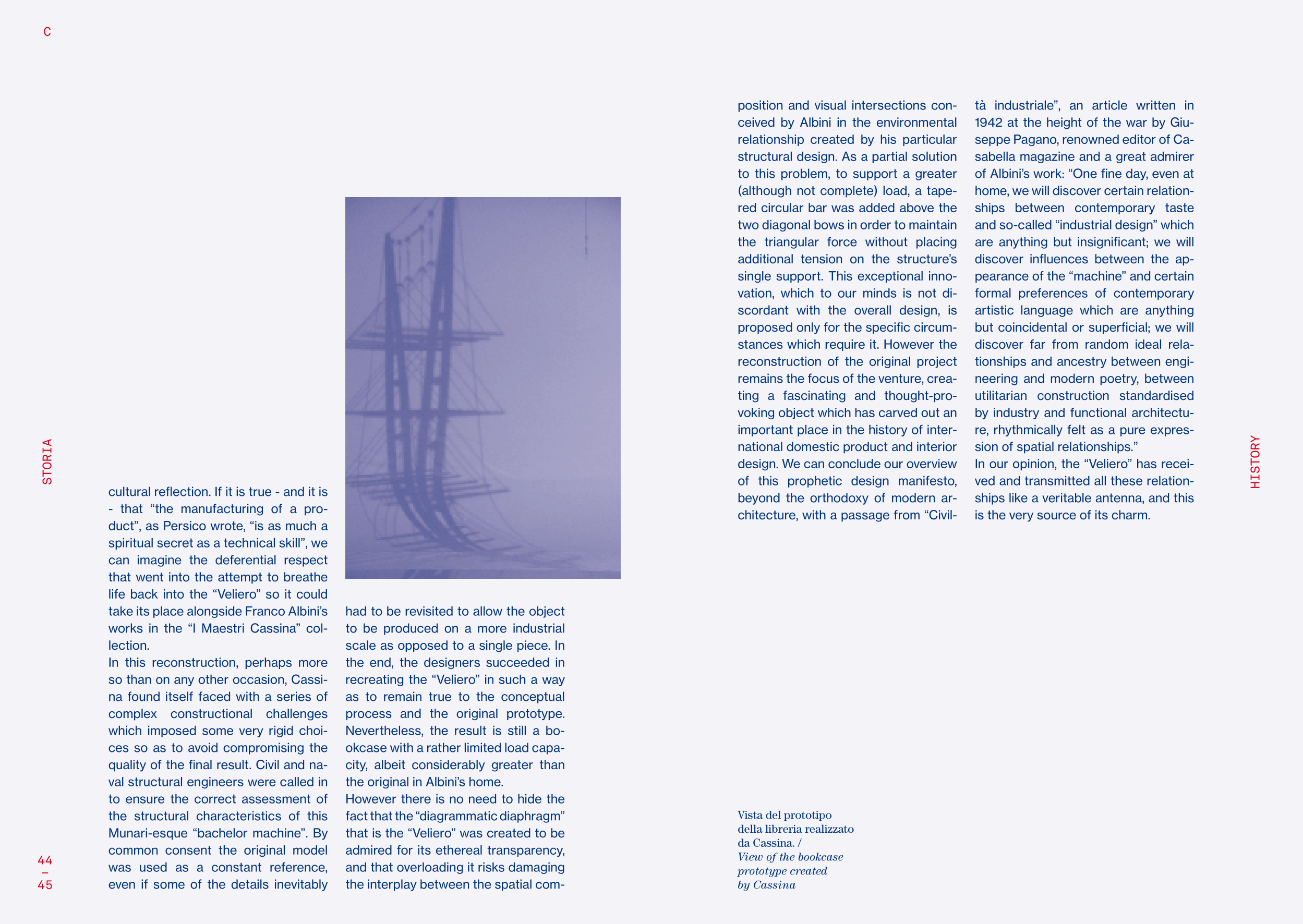cultural reflection. If it is true - and it is
- that “the manufacturing of a pro-
duct”, as Persico wrote, “is as much a
spiritual secret as a technical skill”, we
can imagine the deferential respect
that went into the attempt to breathe
life back into the “Veliero” so it could
take its place alongside Franco Albini’s
works in the “I Maestri Cassina” col-
lection.
In this reconstruction, perhaps more
so than on any other occasion, Cassi-
na found itself faced with a series of
complex constructional challenges
which imposed some very rigid choi-
ces so as to avoid compromising the
quality of the final result. Civil and na-
val structural engineers were called in
to ensure the correct assessment of
the structural characteristics of this
Munari-esque “bachelor machine”. By
common consent the original model
was used as a constant reference,
even if some of the details inevitably
had to be revisited to allow the object
to be produced on a more industrial
scale as opposed to a single piece. In
the end, the designers succeeded in
recreating the “Veliero” in such a way
as to remain true to the conceptual
process and the original prototype.
Nevertheless, the result is still a bo-
okcase with a rather limited load capa-
city, albeit considerably greater than
the original in Albini’s home.
However there is no need to hide the
fact that the “diagrammatic diaphragm”
that is the “Veliero” was created to be
admired for its ethereal transparency,
and that overloading it risks damaging
the interplay between the spatial com-
position and visual intersections con-
ceived by Albini in the environmental
relationship created by his particular
structural design. As a partial solution
to this problem, to support a greater
(although not complete) load, a tape-
red circular bar was added above the
two diagonal bows in order to maintain
the triangular force without placing
additional tension on the structure’s
single support. This exceptional inno-
vation, which to our minds is not di-
scordant with the overall design, is
proposed only for the specific circum-
stances which require it. However the
reconstruction of the original project
remains the focus of the venture, crea-
ting a fascinating and thought-pro-
voking object which has carved out an
important place in the history of inter-
national domestic product and interior
design. We can conclude our overview
of this prophetic design manifesto,
beyond the orthodoxy of modern ar-
chitecture, with a passage from “Civil-
tà industriale”, an article written in
1942 at the height of the war by Giu-
seppe Pagano, renowned editor of Ca-
sabella magazine and a great admirer
of Albini’s work: “One fine day, even at
home, we will discover certain relation-
ships between contemporary taste
and so-called “industrial design” which
are anything but insignificant; we will
discover influences between the ap-
pearance of the “machine” and certain
formal preferences of contemporary
artistic language which are anything
but coincidental or superficial; we will
discover far from random ideal rela-
tionships and ancestry between engi-
neering and modern poetry, between
utilitarian construction standardised
by industry and functional architectu-
re, rhythmically felt as a pure expres-
sion of spatial relationships.”
In our opinion, the “Veliero” has recei-
ved and transmitted all these relation-
ships like a veritable antenna, and this
is the very source of its charm.
Vista del prototipo
della libreria realizzato
da Cassina. /
View of the bookcase
prototype created
by Cassina
STORIA
44
–
45
HISTORY
C


